We all know from school that the Mariana Trench is the deepest place on our planet. It's a known fact that the pressure in this tectonic fault has more than a thousand times higher than the average atmospheric pressure on Earth. So, what creature could live at a depth of almost 11 kilometers? None you say… well, there are some and for decades they've been intriguing researchers around the world. Today, I am going to tell you about the most amazing dwellers of the Mariana Trench. But first of all, we need to clarify some things to picture the conditions these creatures live in. Firstly sunlight simply can't reach this depth, secondly, the temperature reaches very low levels. Not to mention the pressure of thousands of tons of water. Most of these deep-sea creatures would die on the spot once on land because their bodies are adapted to completely different living conditions, and you can imagine what would happen to a human at the bottom of the trench. So let's begin...
1.Anglerfish
This fish is also known as the ‘’sea devil’’. You must have seen some pictures of it. Nevertheless, there are almost no real photos of this fish in its habitat as it lives only at extreme depths which are difficult for humans to access. The name of this creature is a direct reference to its appearance. 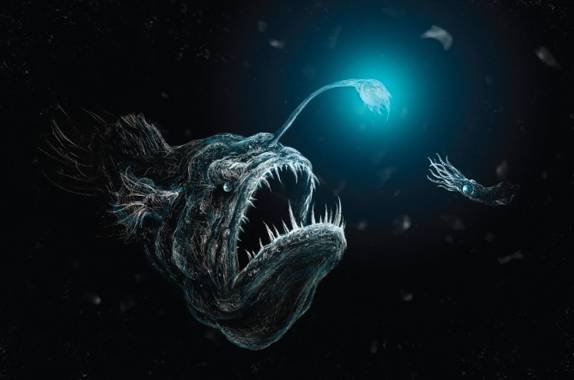
The fact is that the Anglerfish has a special role too with a flashlight on its head which is used to lower the prey in. It's a special gland with bacteria inside it. The anglerfish itself decides, whether to turn its lantern on or off, expanding on narrowing the blood vessels. So, if the vessels expand the torch receives more oxygen and starts shining bright light and if the blood vessels are narrowed the light goes off. And when another fish approaches the evil light the angler just opens its mouth and sucks in the fish in the blink of an eye. The extravagant look is completed with a huge mouth with teeth as a razor and a shapeless body. 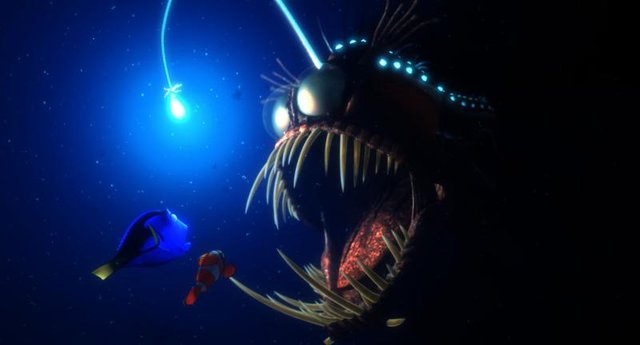
The size of the animals by, the way, depends on the sex of the fish. The female body can reach 1 meter in length, while males are no more than four centimeters long. So, the tiny males often live as parasites on the body of the females and gradually becoming part of it. Female Anglers are particularly bloodthirsty. For example, they can swallow prey several times larger than they are. Sometimes this even leads to the death of the predator itself. That's what happens when you're too greedy.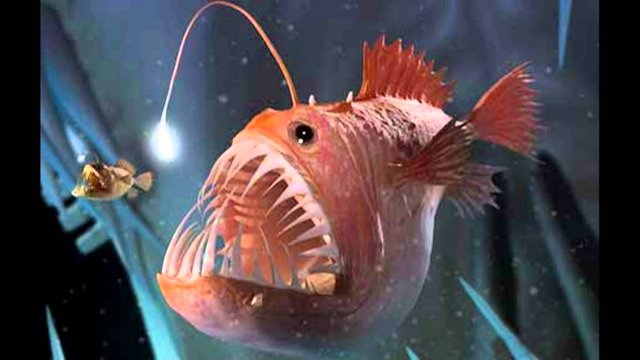
2.Sea Cucumbers
These animals which are sometimes mistaken for jellyfish are quite harmless to humans. Sea cucumbers spend most of their lives crawling along the seabed including the bottom of the Mariana Trench. 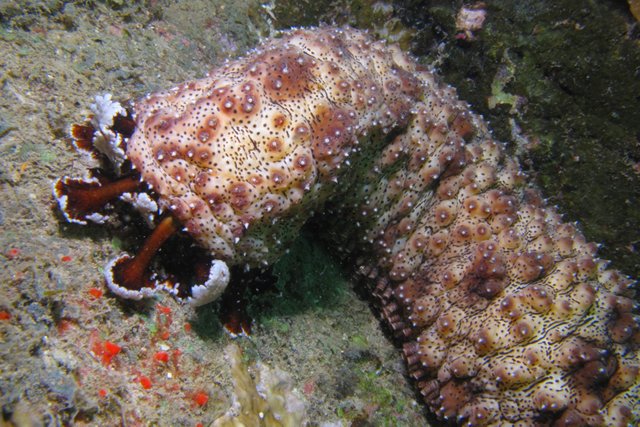
By the way, it's believed that it was this creature that was seen first by the members of the 1960 expedition to the Mariana Trench. These animals have a special defense mechanism against enemies. It is a poisonous substance in their intestines that's released into the water when they feel danger. 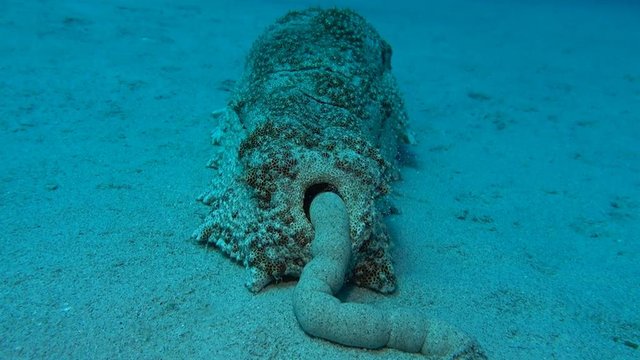
Besides, they're able to provide some organism with a body to live in. Interestingly in Asia and especially China sea cucumbers are actively used in cosmetics and cooking. But of course, for this purpose, they usually grown artificially rather than extracted from the depths of the Pacific.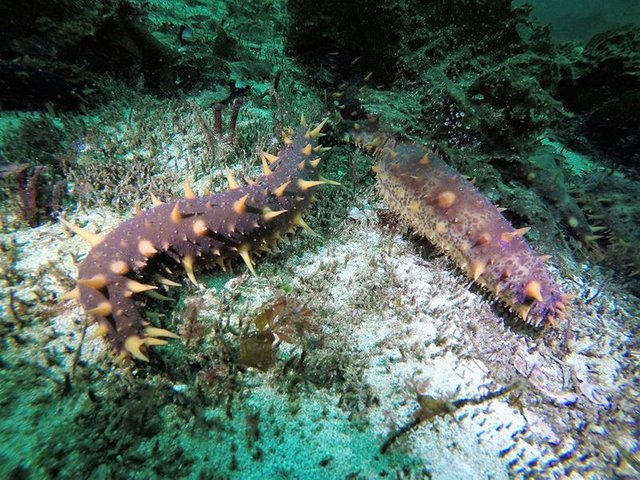
3.Hermit Crab
At the first glance, this hermit crab doesn't differ from other similar species living in shallow waters, but if you look closely you can see that it's holding an enemy with one pair of legs. It's a flower-like coral polyp, which serves as a protective shell of the crab.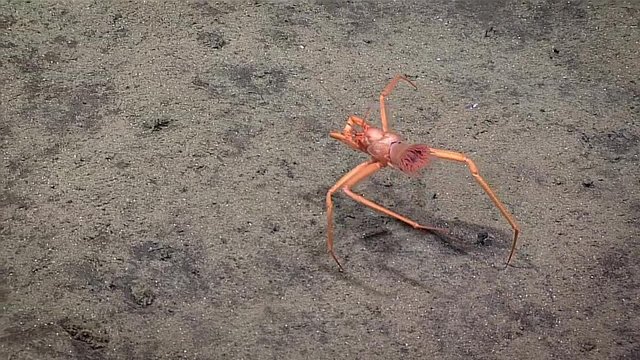
Usually, hermit crabs use empty shells of shellfish instead, but this species has a slightly different structure, because of this it may seem that this deep-sea hermit crab has fewer legs than necessary. But in fact, it just uses two of them to hold me an enemy in place when it moves it looks like a spider (sorry arachnophobes you must feel pretty uncomfortable now). 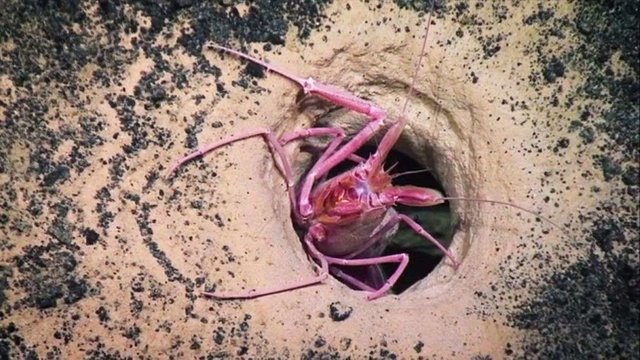
4.Bioluminescent Jellyfish
Scientists learned about the existence of this creature in the Mariana Trench very recently, only in 2016. Incredible images of this otherworldly beauty were captured during the deep-water exploration of the Marianas Expedition.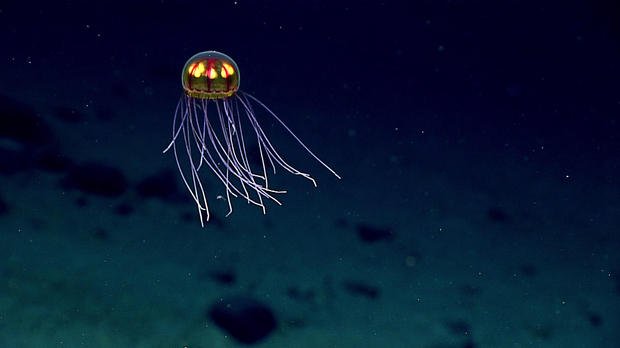
This fantastic jellyfish was discovered by researchers at a depth of almost 4000 meters. According to scientists, this unusual creature is most likely a predator. Proof of that is bioluminescent pulsating heath and its tentacles. There are also speculations that the yellow organs in its head have a reproductive function while the red organs are responsible for digestion.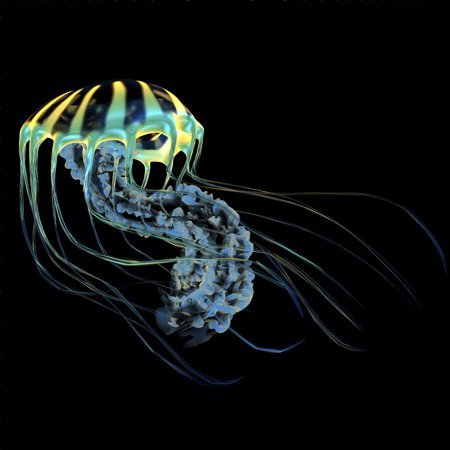
5.Predatory Tunicate
This deepwater creature is not as harmless as it might seem at first glance. While other members of the species are filter feeders, the predatory tunicate uses its giant mouth to hunt passing crustaceans and zooplankton.

Believe it or not, some scientists say that these voracious creatures appeared more than 550 million years ago and could be our ancestors. Here is an unexpected rifle to Darwin's theory. The matter is that these predatory creatures have both a backbone and a brain that is unprecedented for this species. The brain, however, has the unusual ability to switch off after the animal attaches to a cliff and shifts to a sedentary lifestyle. 
6.Acorn Worms
Did you know that the legendary film director James Cameron, who filmed world-famous movies like Titanic and Avatar is a fan of deep-sea adventures. It was the third and last of the brave men who dared to dive to the bottom of the Mariana Trench. As a result of this expedition, many new species of microorganisms and invertebrates were discovered in 2012, including these so-called and tailoring species.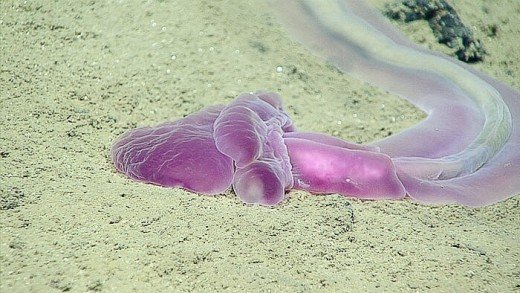
These worm-like creatures come in a variety of species, but those that live in deep waters are particularly impressive. Some individuals can grow up to two and a half meters long. They also have striking bright colors, unlike their relatives from shallow waters. But the most interesting thing is that these creatures can fly, in the water of course. This is possible because the creatures use to have wings presented as shaped folds along the body which allow them to soar in the water, overcoming long distances. 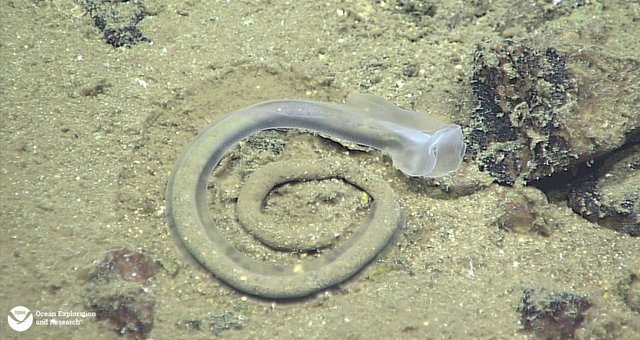
7.Giant Grenadier
This bug-eyed fish which can be up to one meter long is usually found just above seafloor level. It floats slowly along the surface in search of living prey and uses a special chemical compound for the pungent smells to protect itself. By the way, Grenadiers are considered to be long-lift fish.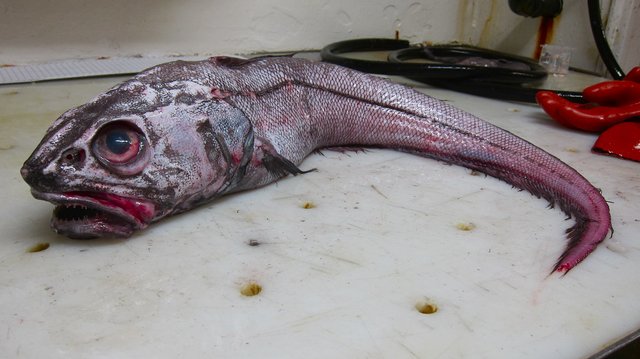
They can live as long as 70 years, and in some countries, this species is also valued in cooking. Experts say that this fish tastes much better than even the finest Atlantic cod. It is important to note that only fish that live in shallow waters tastes good. The deeper it lives the more pronounced taste it has. The fishy smell is caused by trimethylamine oxide, a compound that helps fish survive under extreme pressure. So eating a Grenadier from the bottom of the Mariana Trench is not a good idea for your entire health.
8.Giant Amphipods
At first glance, you might think it's just a giant shrimp, but these creatures belong to the amphipod order of crustaceans and they are not even related to shrimp. 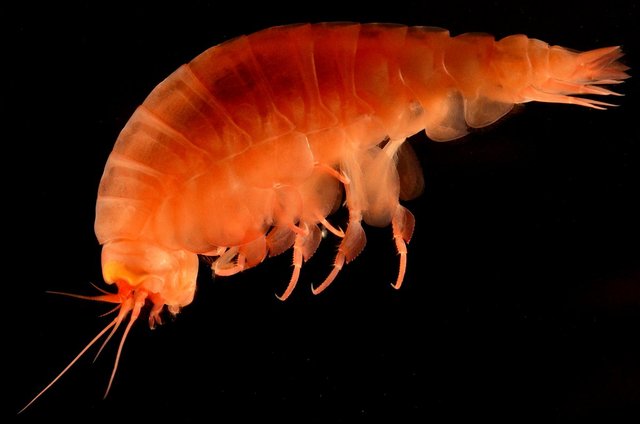
According to research, the size of the amphipods directly depends on the depth of their habitat. The deeper they live, the longer they grow. Some species of these arthropods are more than 30 centimeters long. For comparison, their shallow-water relatives are usually one centimeter in length.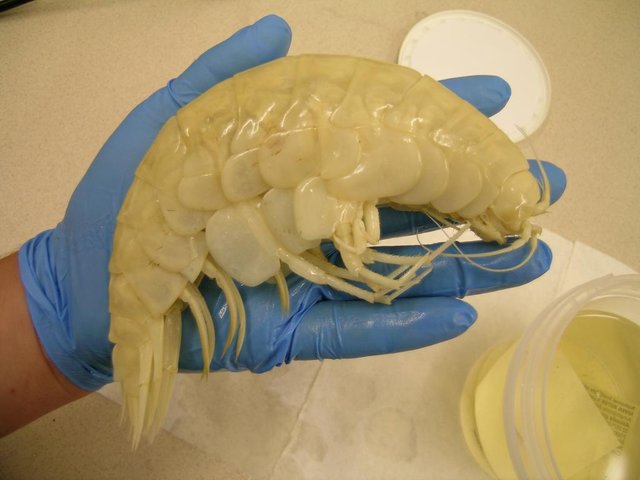
9.Snailfish
This fish is the deepest living creature ever found. Researchers discovered it five years ago in the Mariana Trench at a depth of more than 8,000 meters.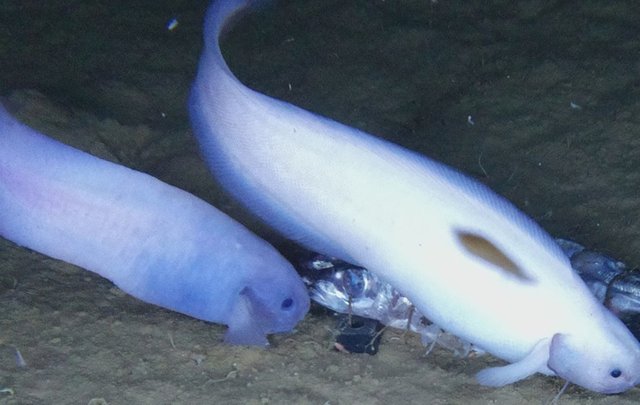
It is a previously unknown species of snailfish which has a transparent body wing-like things and the tail of yield. Because of the unusual appearance, some call it ghost-fish and others think that it looks like the dragon from the famous movie ‘’Never Ending Story’’. We agree that it's quite pretty compared to other deep-sea creatures.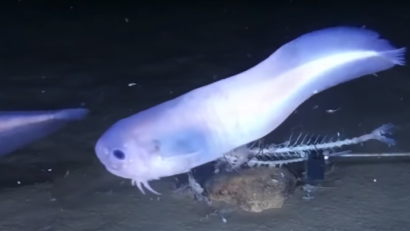
10.Abyssal Ghost Shark
This creature is known as a pointy nose blue Camaro or ghost shark that has been living in the depths of the ocean for 400 million years, but it's rarely found by people. The shark, of course, is not as huge as its ancestor the Megalodon, which reached a weight of a hundred tons, but at least it scares off enemies with this otherworldly look.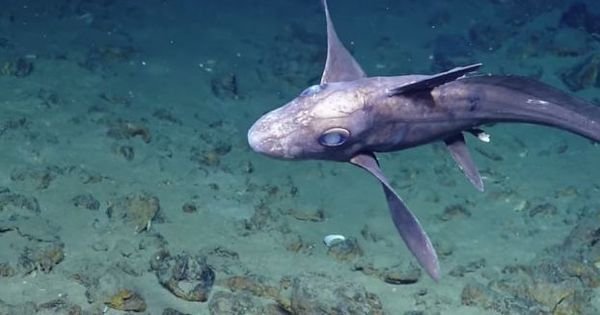
By the way, the name Camaro was given to it in ancient times precisely because of its unusual appearance. In Greek mythology, there was a legend of a monstrous woman whose body consisted entirely of parts of different animals, and she was known as Chimera. The first time the ancient Greeks saw this strange fish, they decided that his body was also made up of parts of other creatures. That's how the fish got its name. 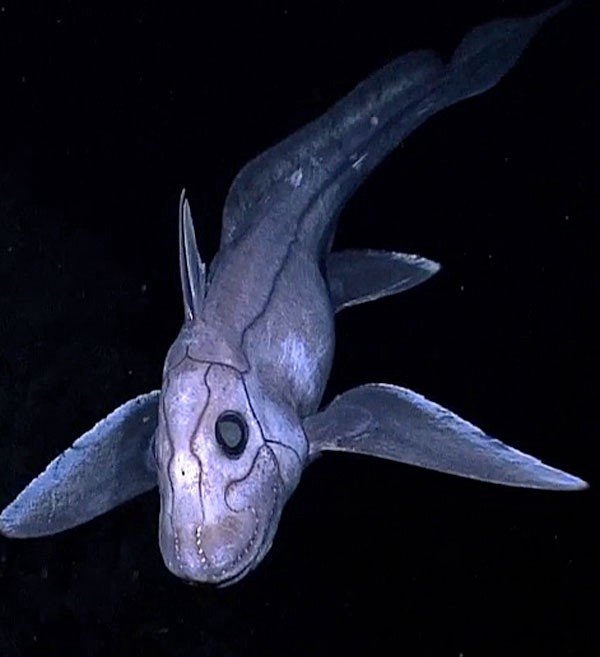
These are few of creatures that live in Marianna Trench, but for sure there are a lot of mysterious species which scientists have not discovered yet. The time will show the future mysteries, all we have to do is just wait.
Congratulations @dreamerfrost! You have completed the following achievement on the Steem blockchain and have been rewarded with new badge(s) :
You can view your badges on your Steem Board and compare to others on the Steem Ranking
If you no longer want to receive notifications, reply to this comment with the word
STOPVote for @Steemitboard as a witness to get one more award and increased upvotes!
Downvoting a post can decrease pending rewards and make it less visible. Common reasons:
Submit